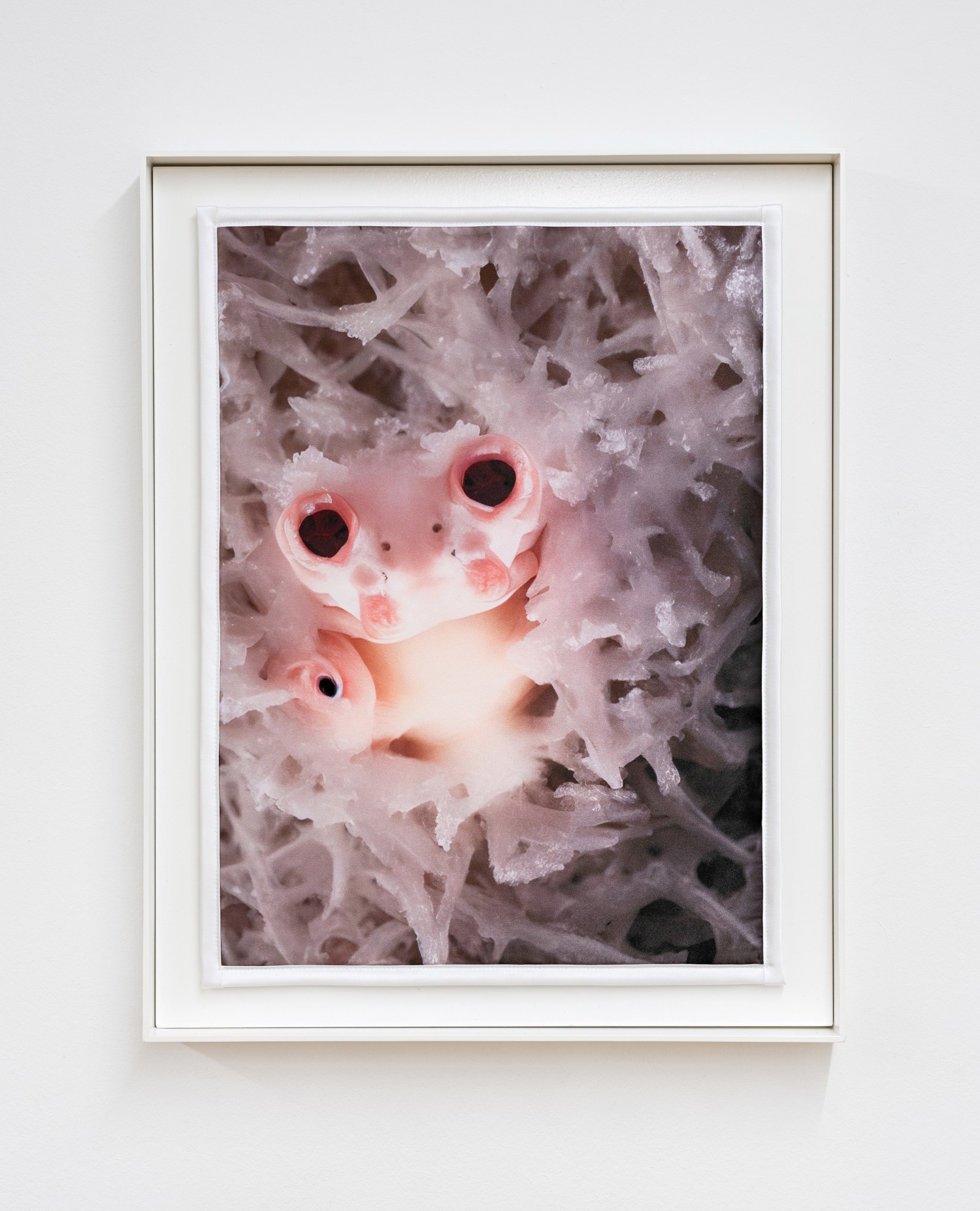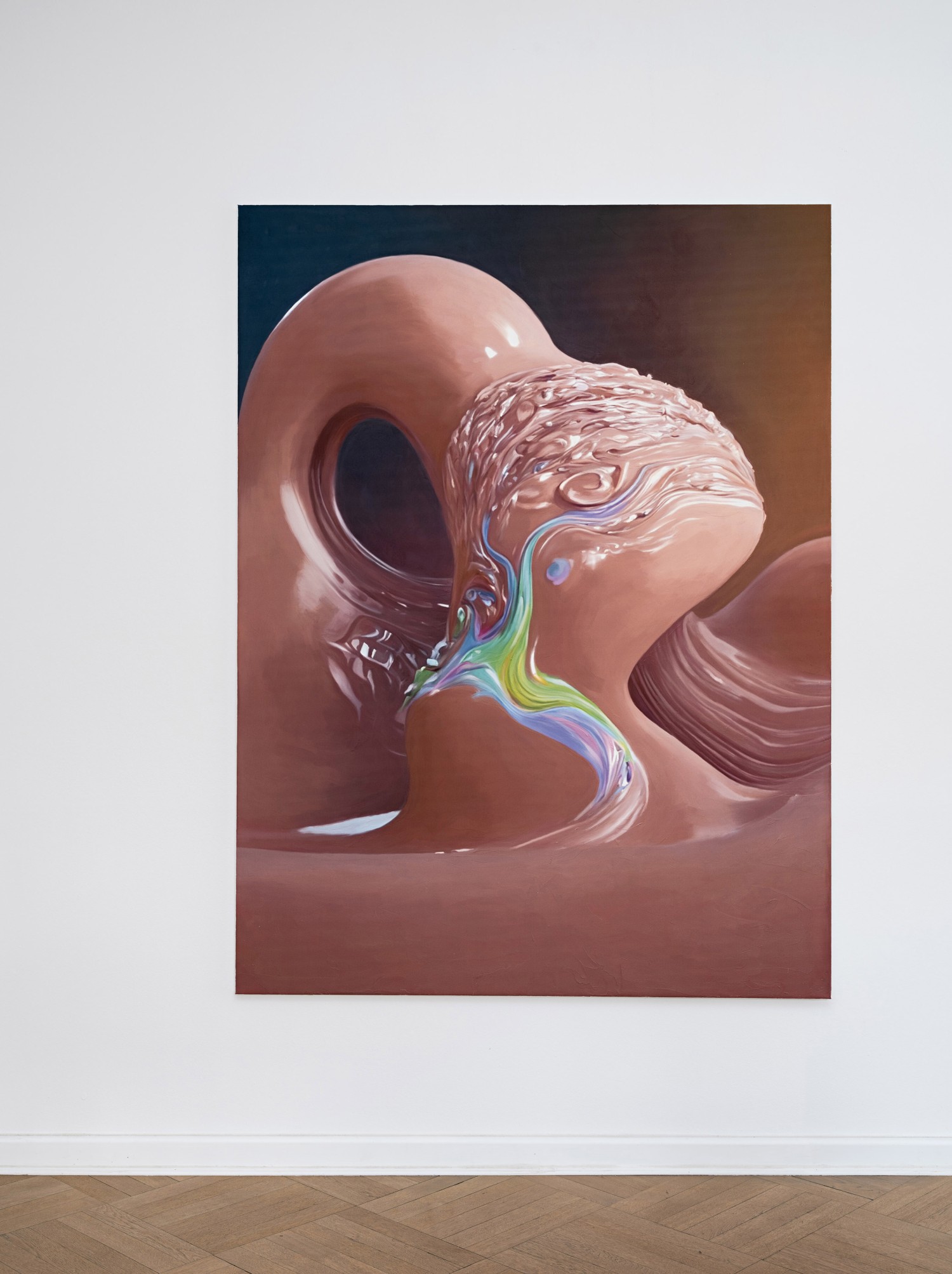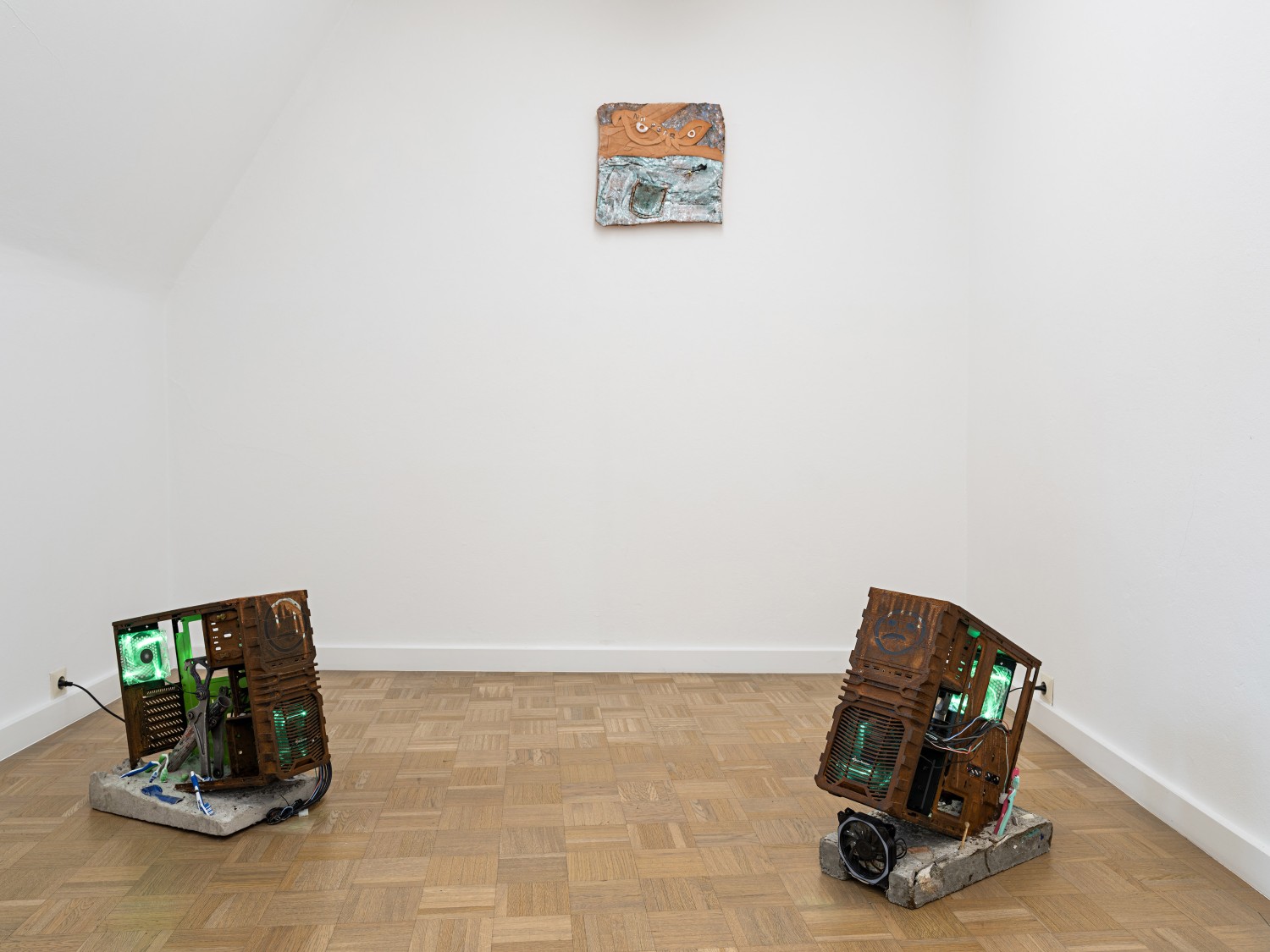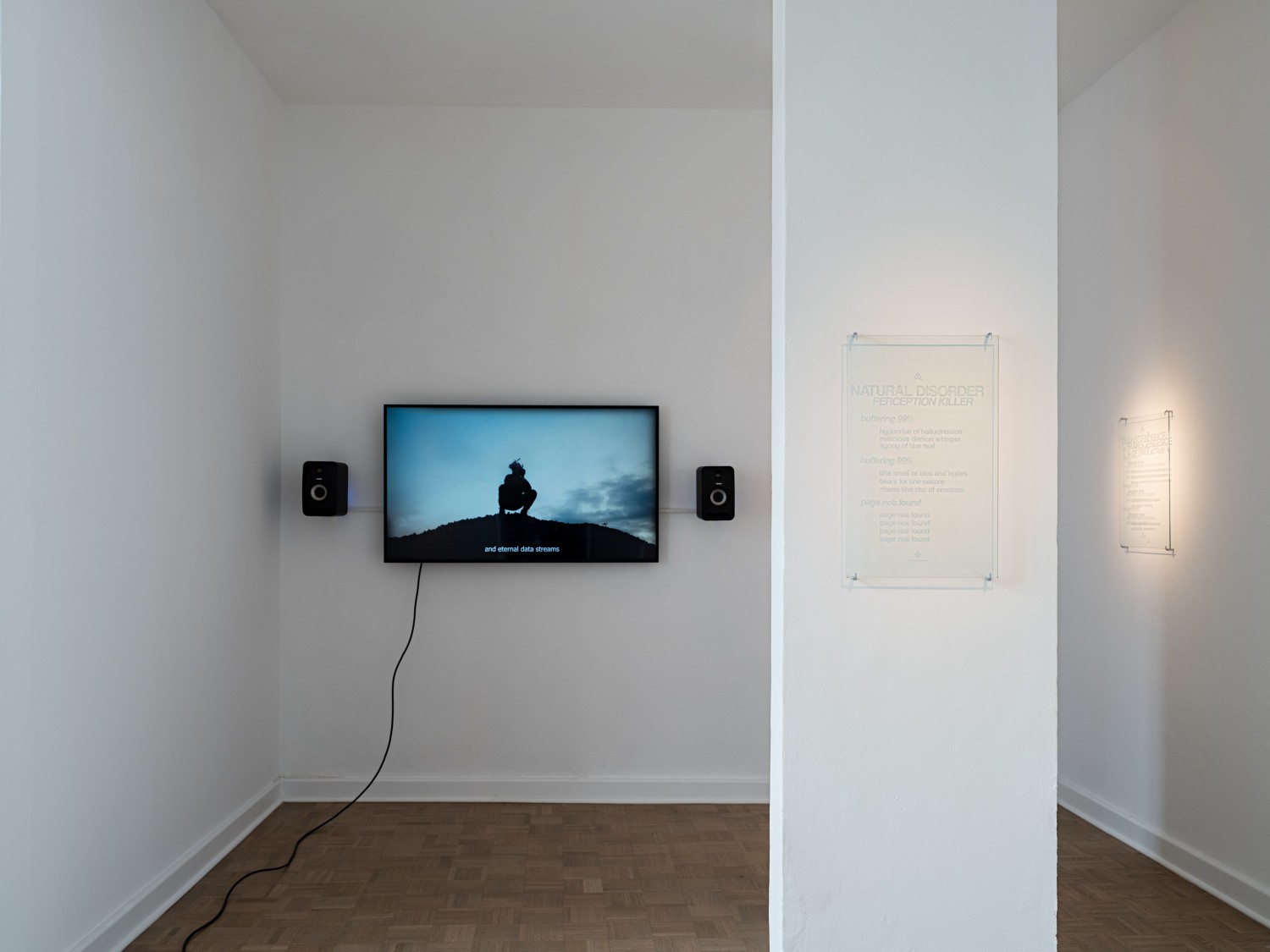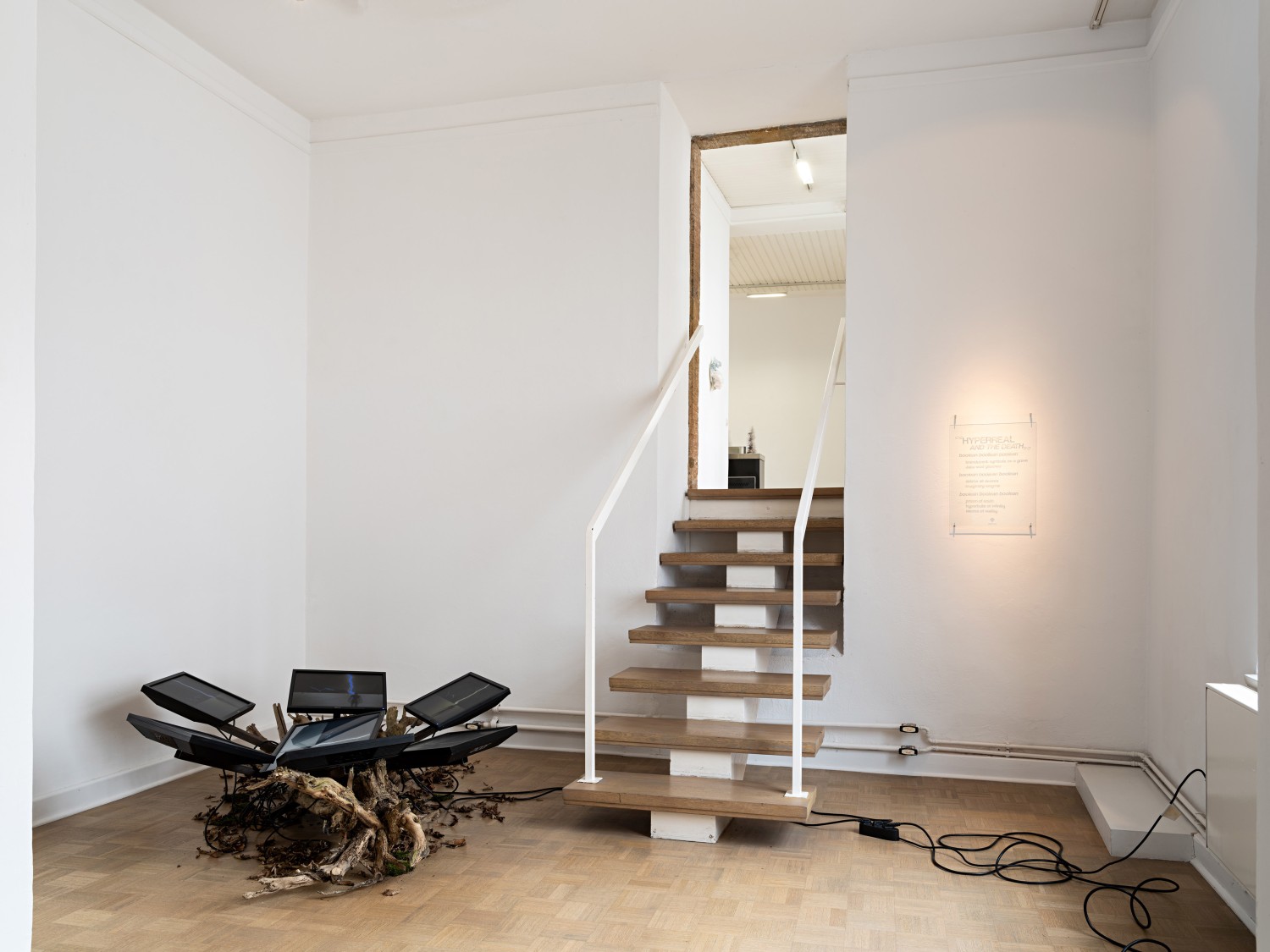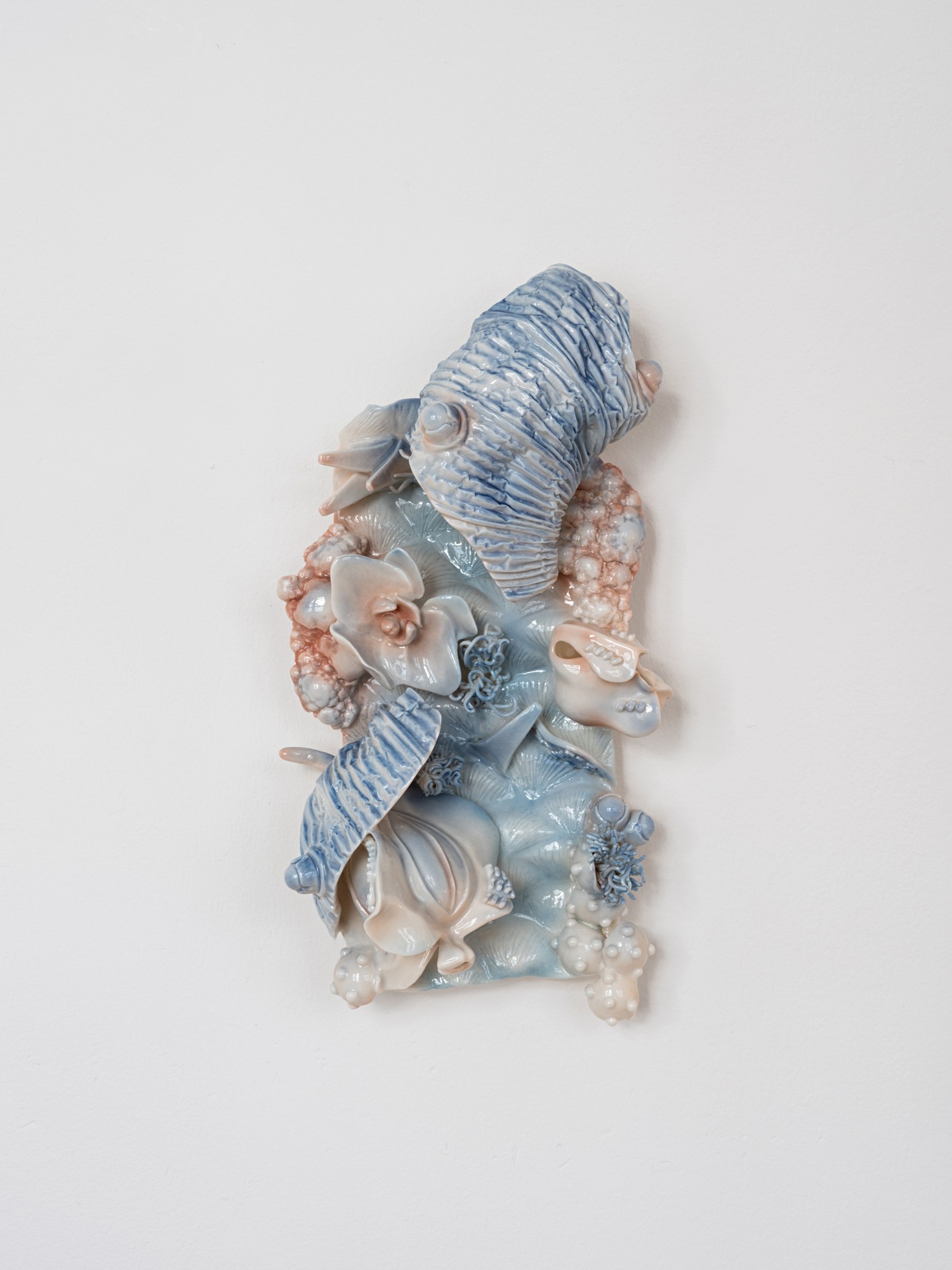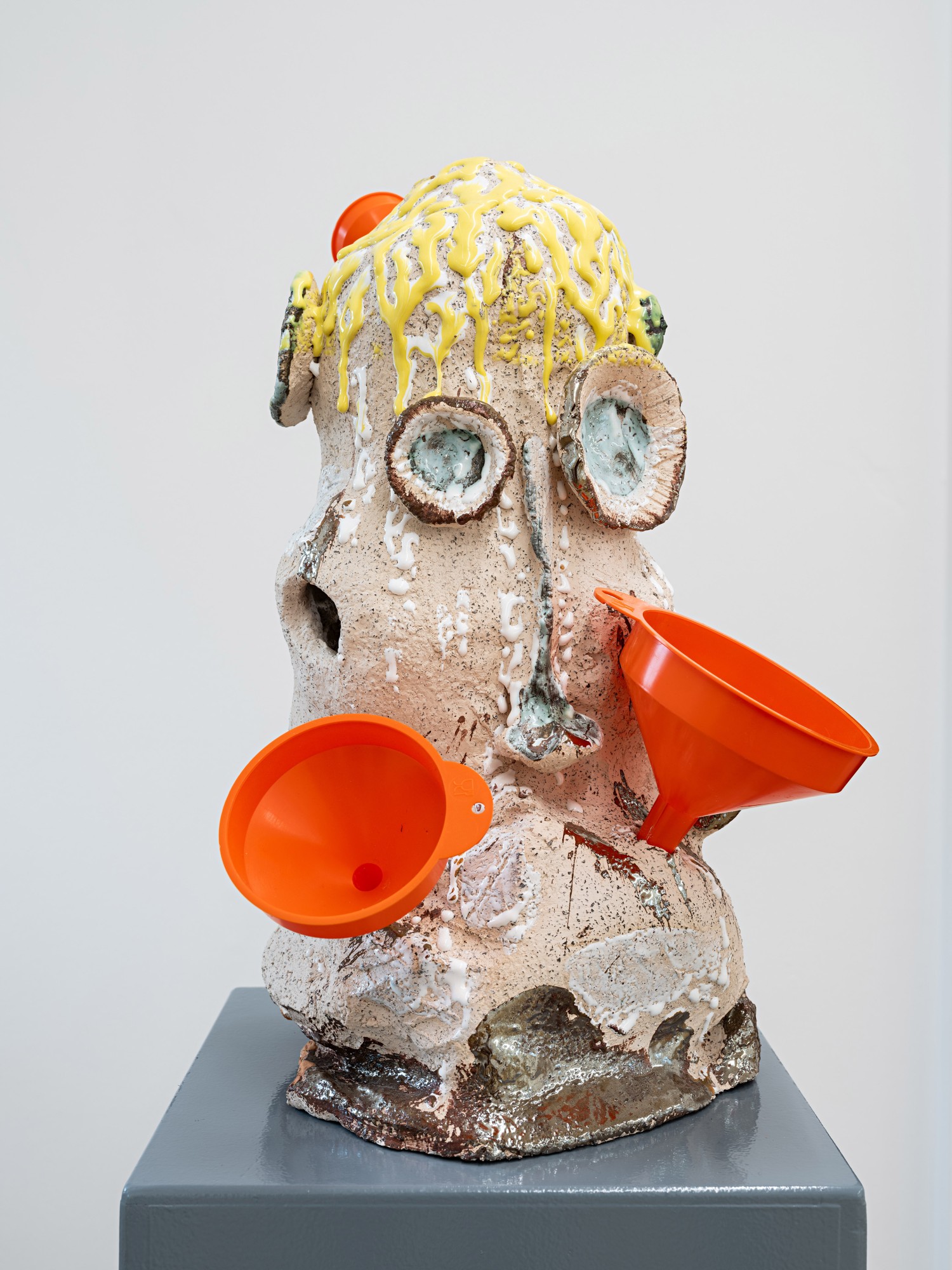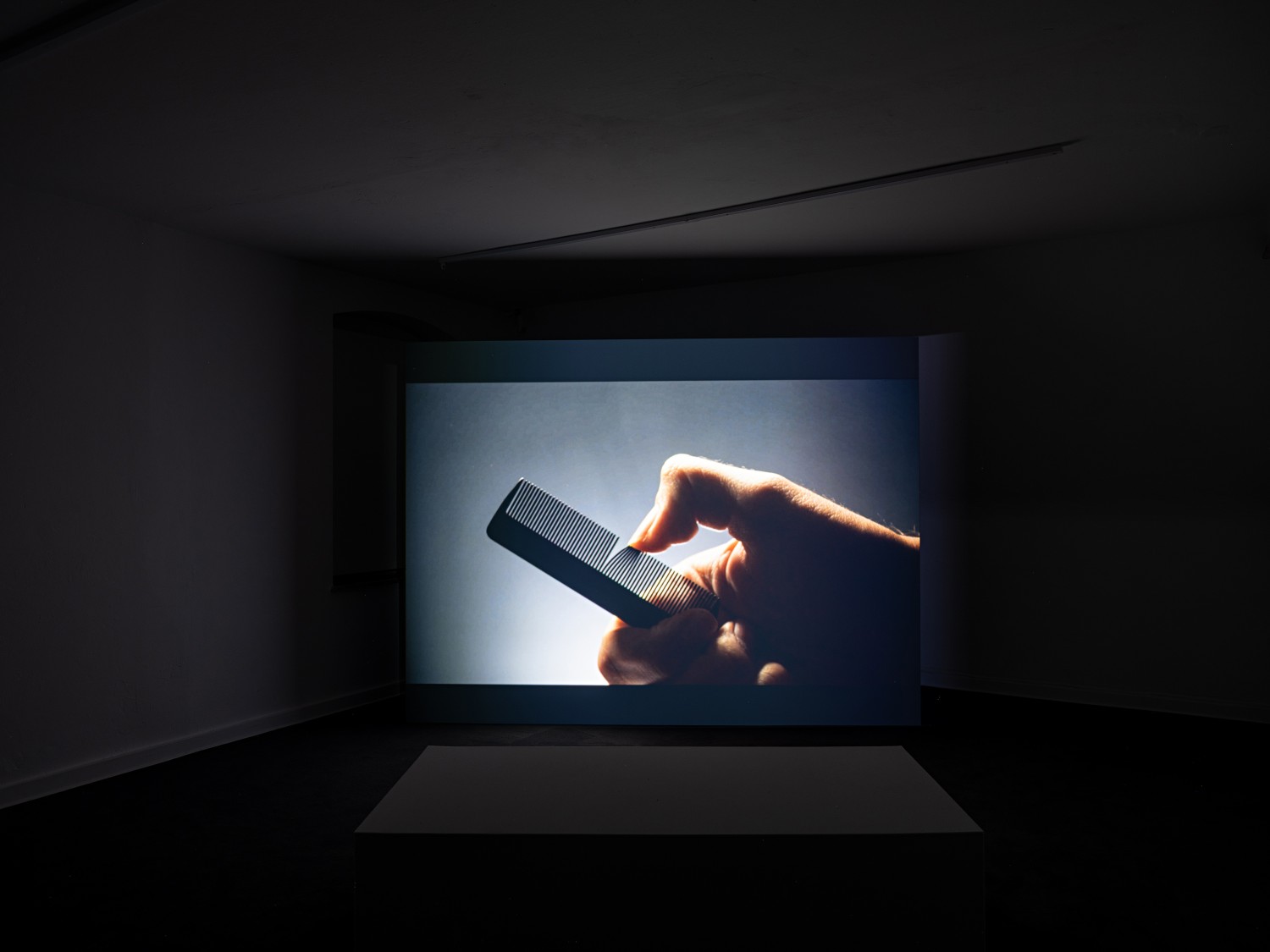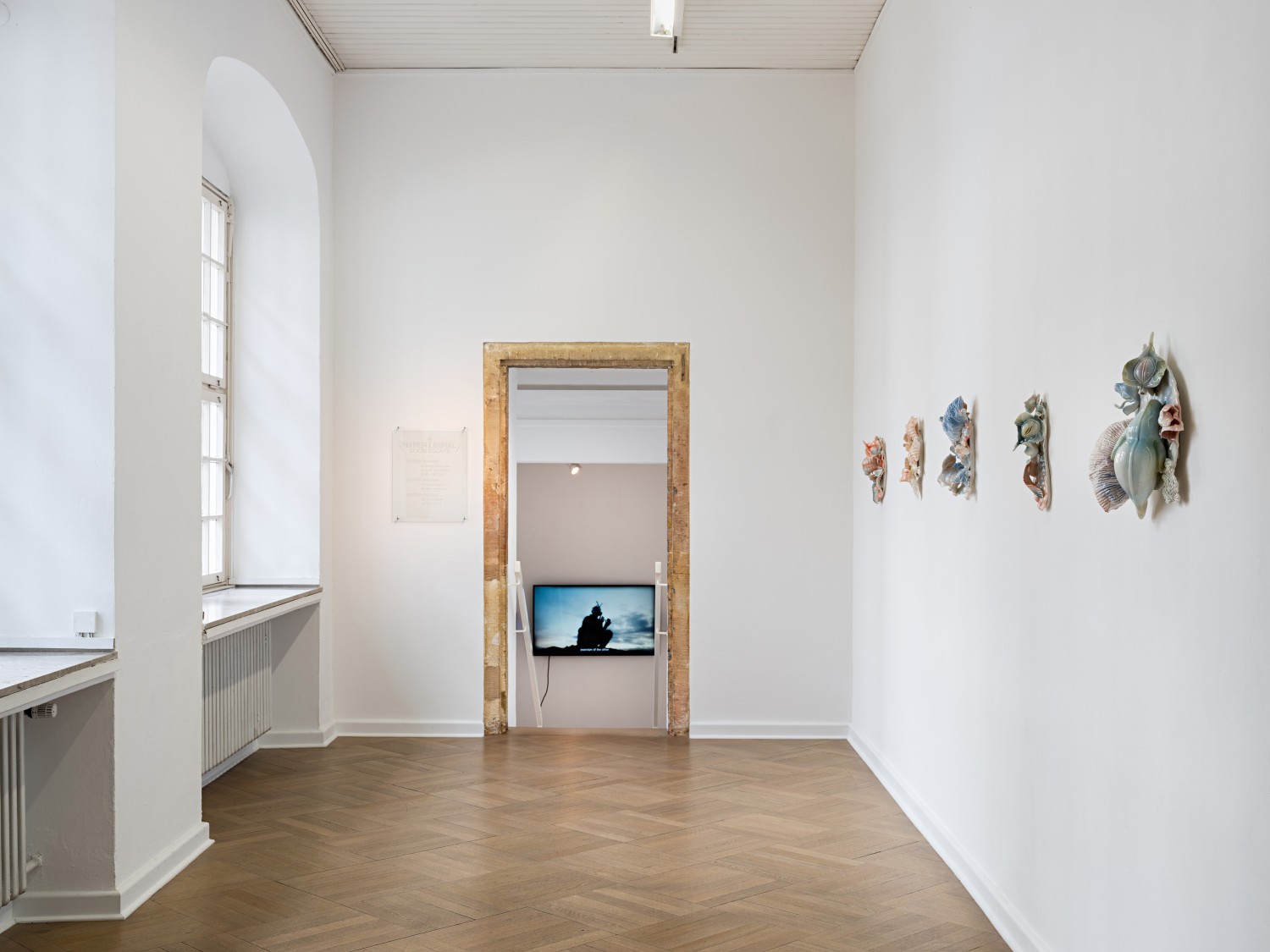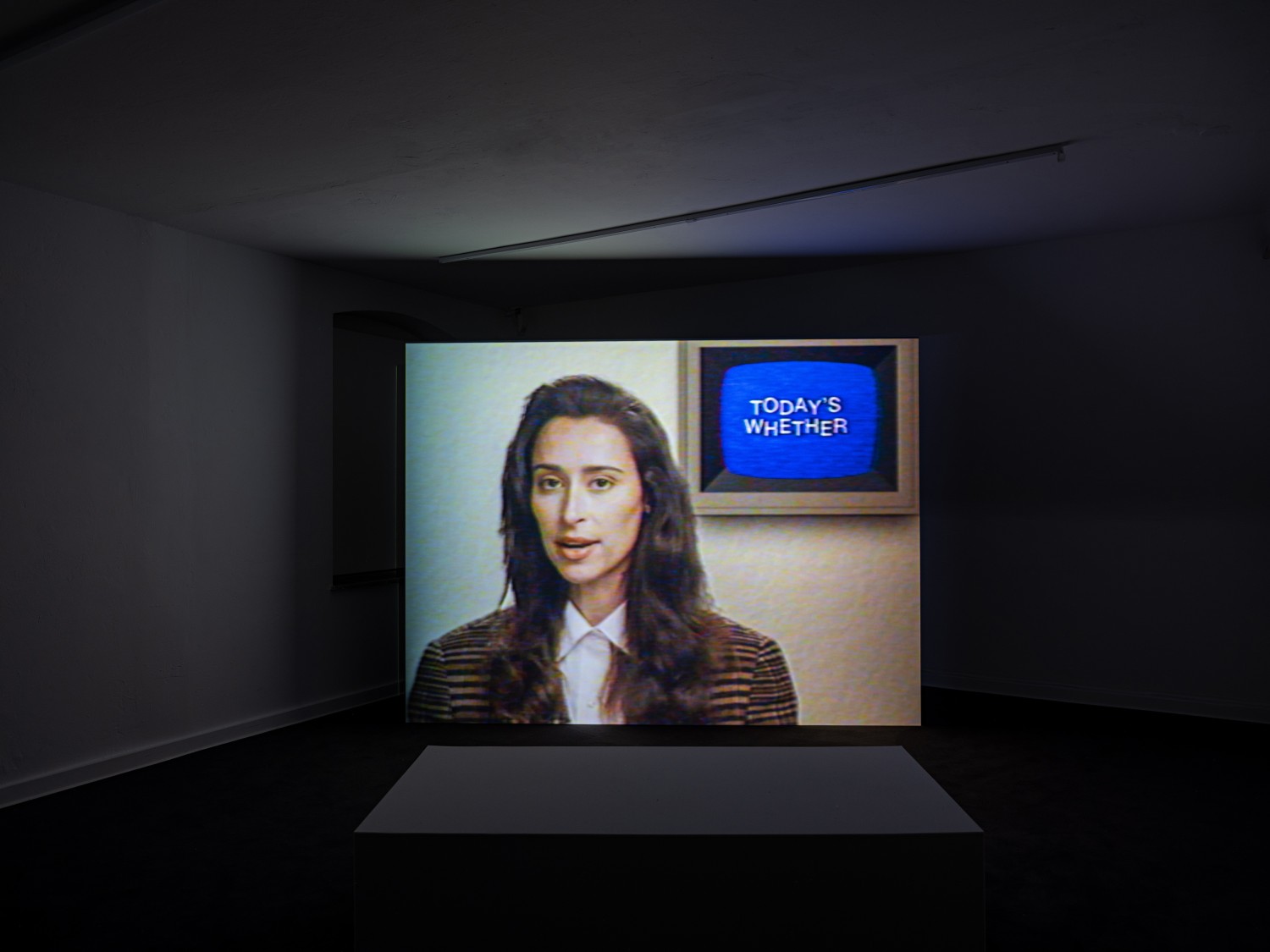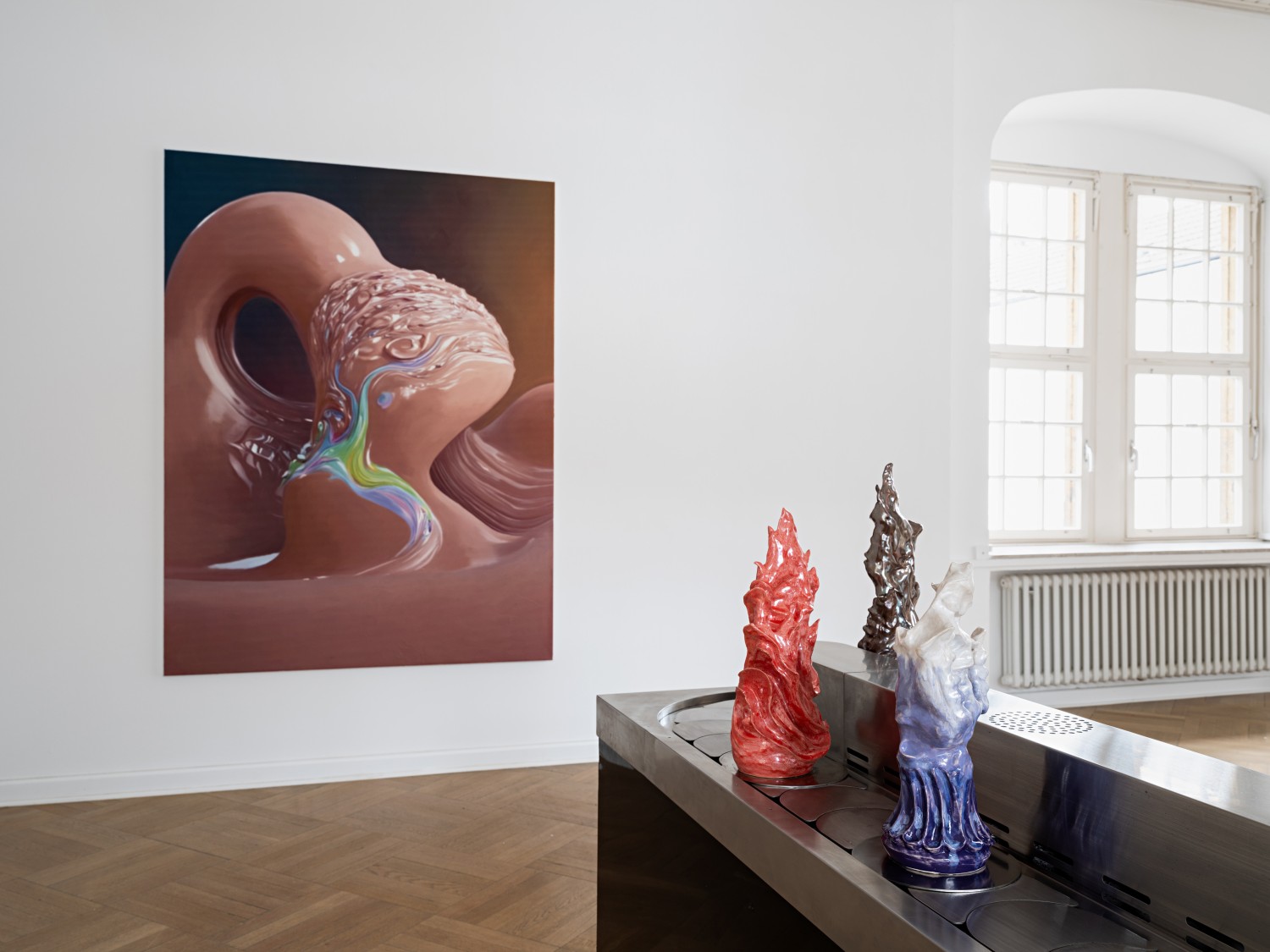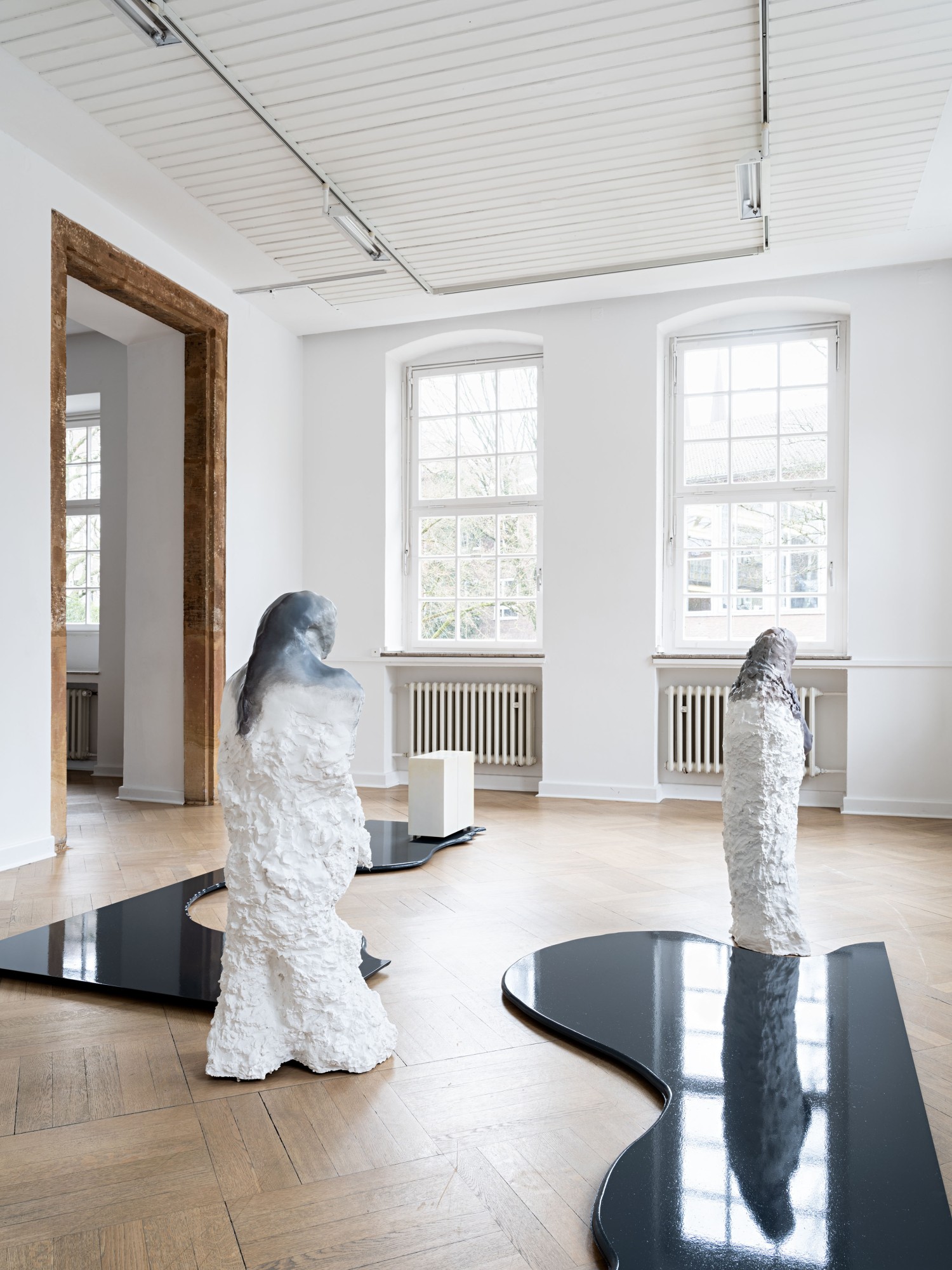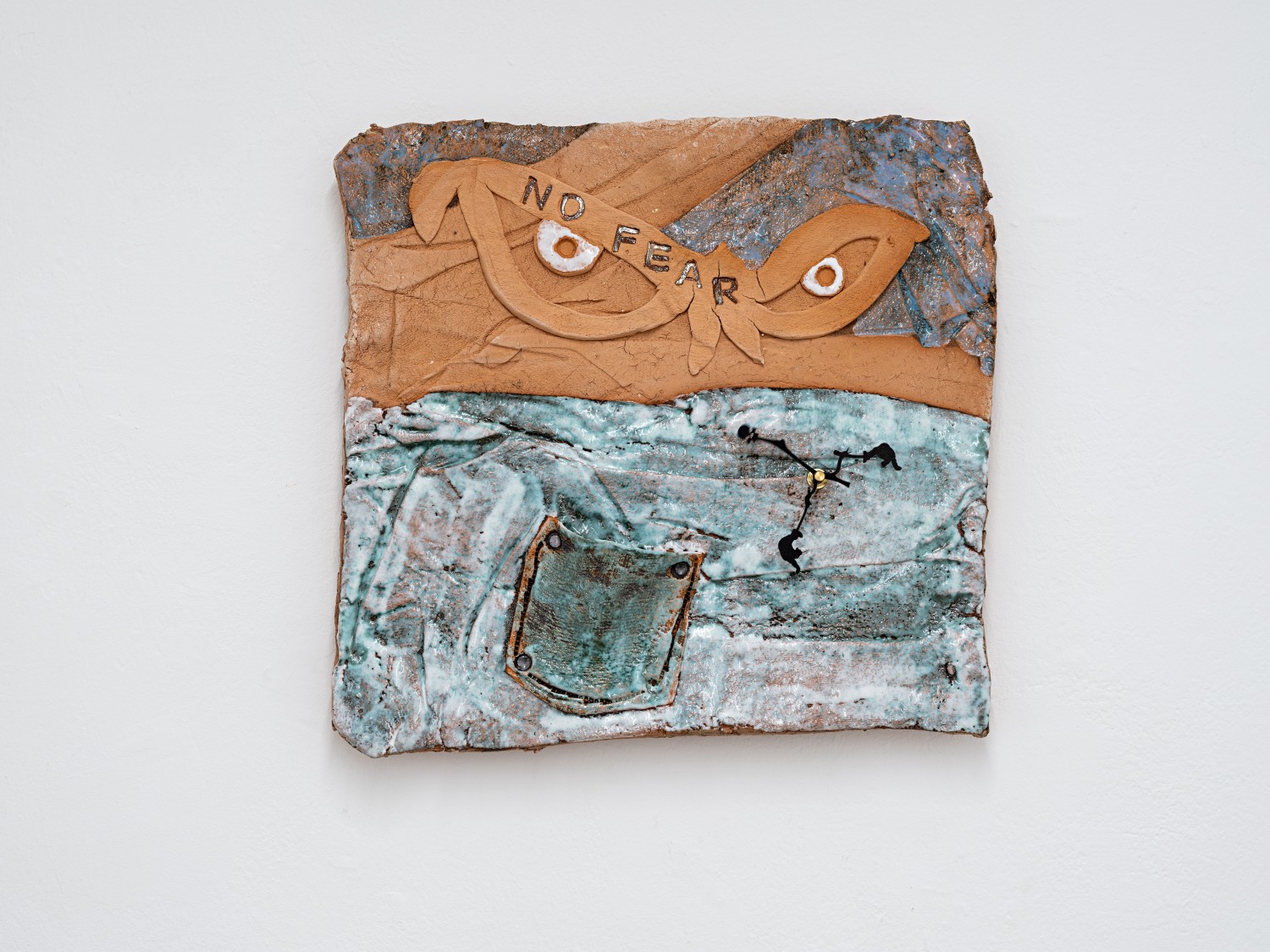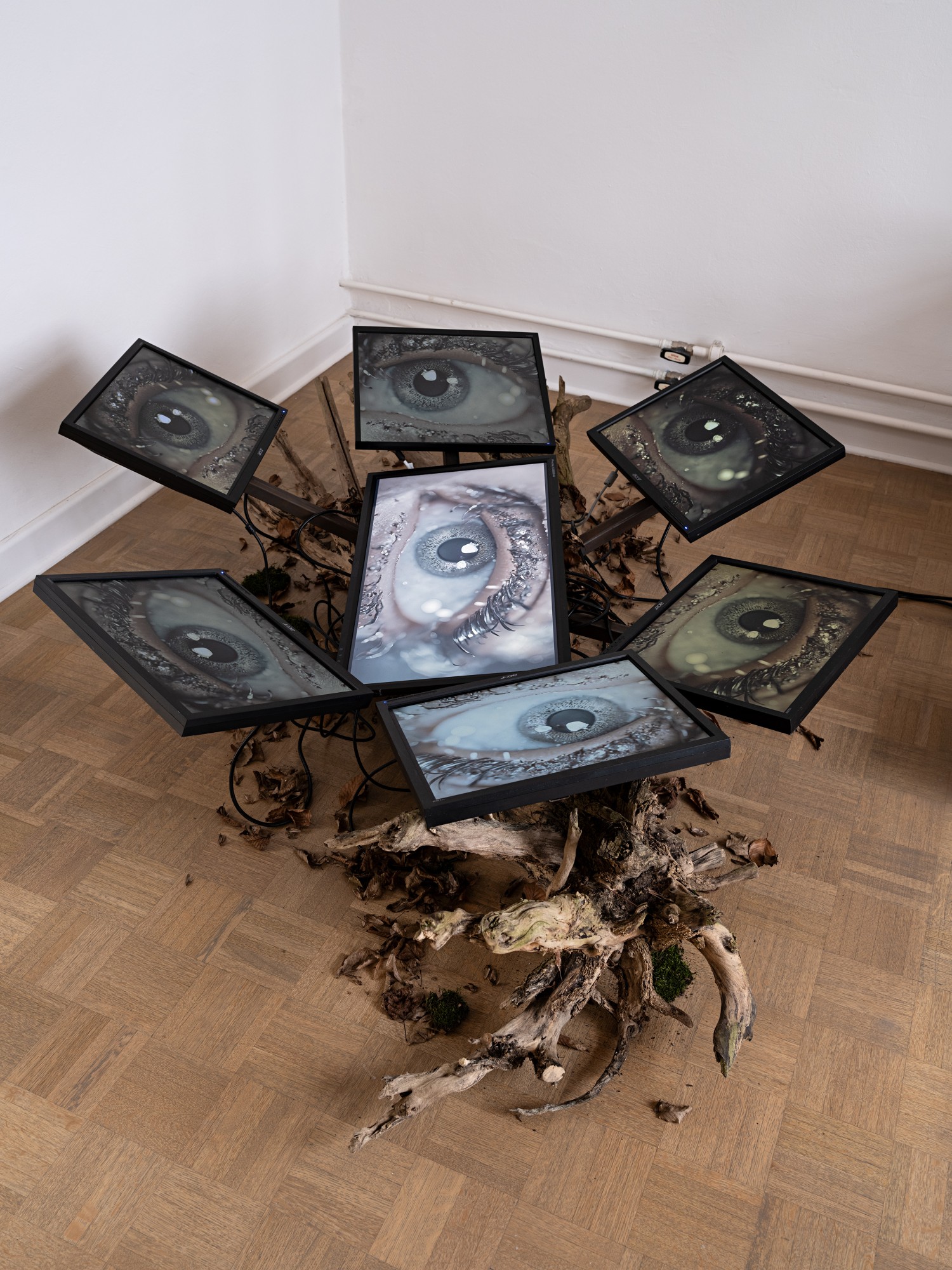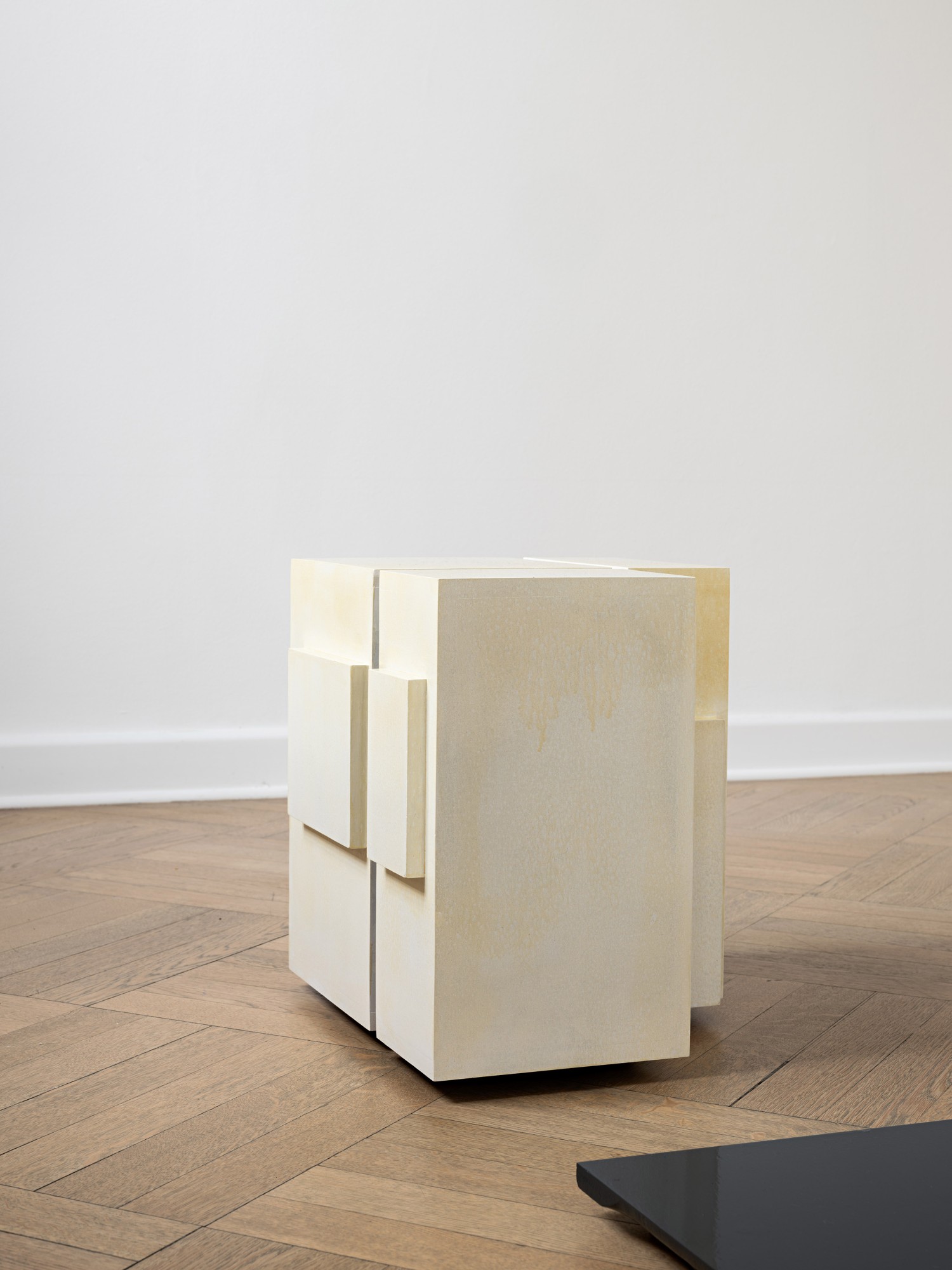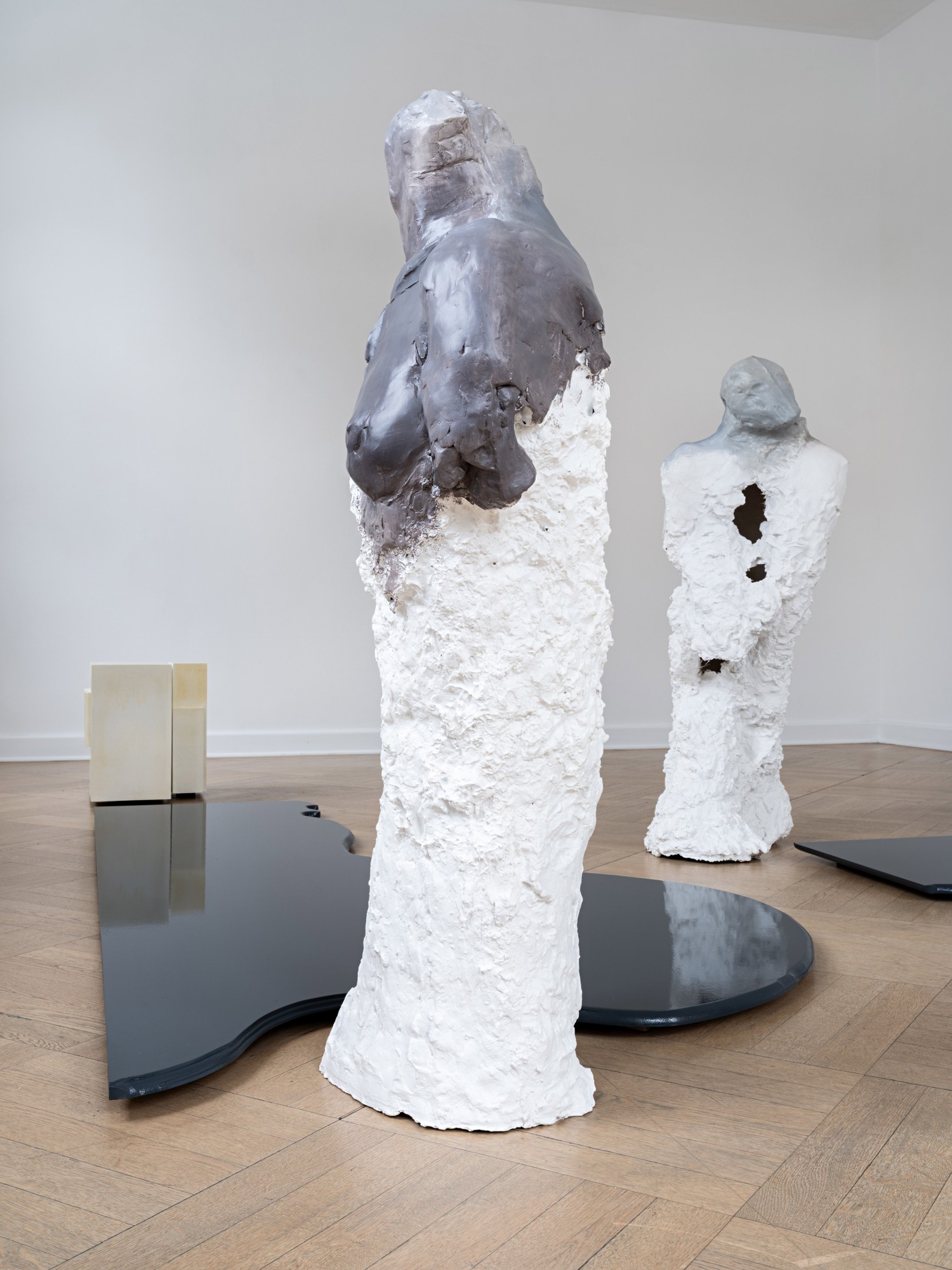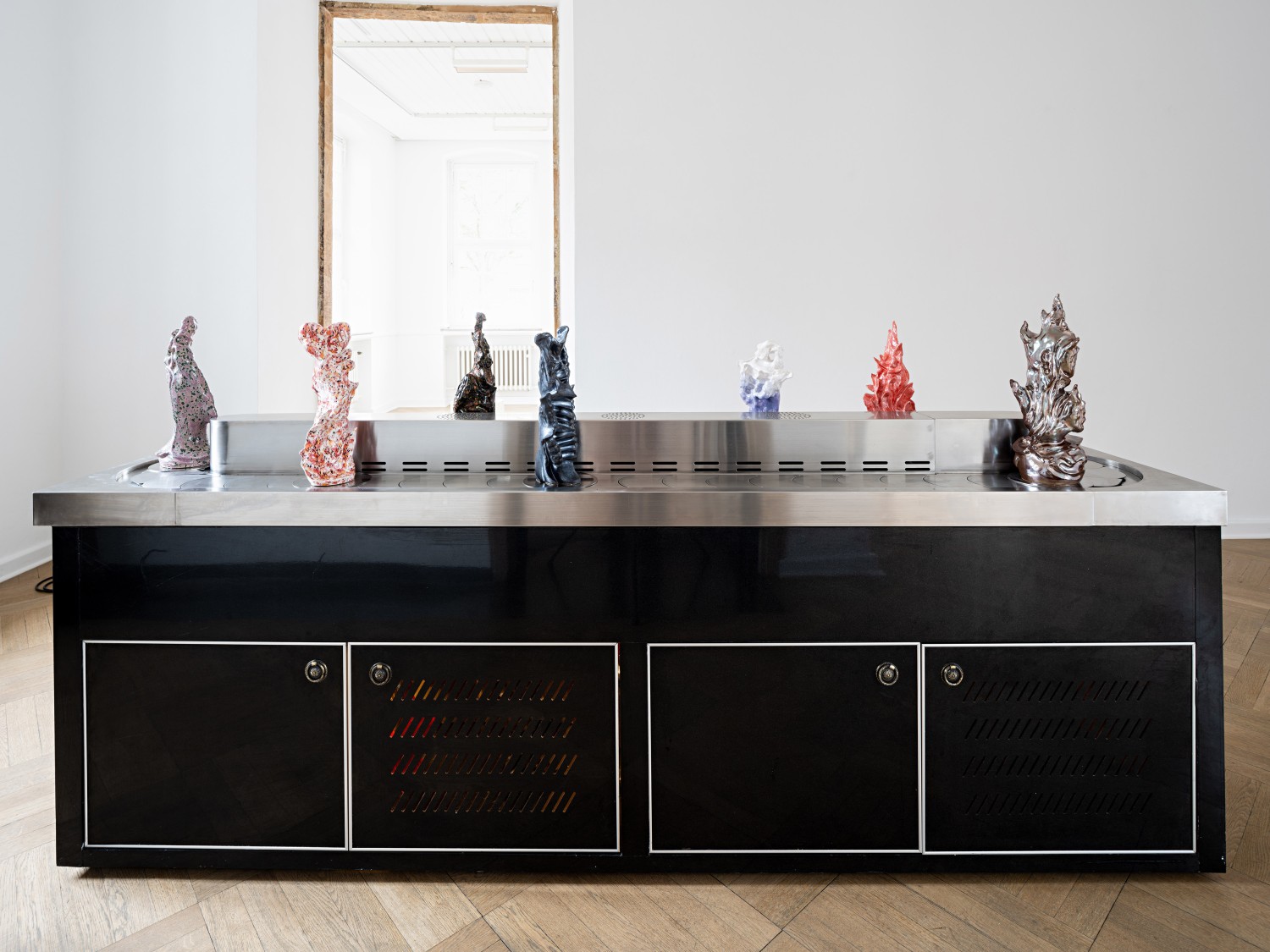A look at the far-reaching consequences of our everyday actions and habits in terms of our consumer behavior and social interaction can lead to the question: Am I a bad person? To what extent am I responsible? Are we a monstrous species? AM I A MONSTER?
How can we deal with the feelings of being torn, overwhelmed, resigned and anger, which can be an expressions of Weltschmerz? Etymologically, the word ”monster” is derived from the Latin word monstrum ”warning sign”, monstrare ”to show” and monere, ”to warn”. In the field of tension between pointing out social problems and challenges of global scope, the works shown in the exhibition also proclaim the desire for improvement and the search for solutions that ”shape” an ecological and fair future?
The narrative of the exhibition brings together a multi-layered spectrum of themes to which the artists Anaïs Goupy, Chloe Wise, Christian Theiss, Diane Haefner, Jonas Monka, Lenn Blaschke, Mary-Audrey Ramirez and Ronny Szillo are dedicated. The perspectives of the individual artistic positions stand alone or intertwine.
In Anaïs Goupy’s Showy Shells (2023), objects from the digital and analog worlds merge. She integrates AI-controlled algorithms, which she feeds with visual data sets, into her image creation processes. To this end, she combines a large number of digital images of objectifying female representations from social media with images of European still lifes from the 17th-18th centuries depicting shells that were declared ”exoticas” and found their way into the curiosity cabinets of European collections. The combination of human and machine gestures creates trompe-l’oeils that question present and past forms of representation with regard to their exploitative mechanisms.
The video work Hyper Liminal (2023) by Lenn Blaschke contrasts a seemingly natural element with the digital. In a video animation in which a society appears to dissolve into artificial intelligence, the artist juxtaposes a supposedly post-apocalyptic landscape with a human-digital hybrid wandering through it. However, the landscape is not a dystopian vision, instead it is the Harz Mountains in central Germany, of which large parts had to be uprooted due to massive bark beetle infestation.
The Shapeshifter (2023) by artist Christian Theiss refer to polytheism in Asia and ancient mythology. Characteristic of this is the message that the negative traits of our existence are just as much a part of life as the good ones. His polymorphous ceramic figures walk in circles on a stainless steel installation, presenting themselves from all sides and making references to seemingly divine figures. His monsters seem trapped in a cycle of presentation and consumption as eternal offerings.
The porcelain sculptures by Diane Haefner tell this story a little further and ask how something of such beauty on the surface can deal with such dark themes? Her delicate works look like genetically modified hybrids with parts of human and plant phenotypes growing out of the material. Haefner applies a subtle airbrush glaze to her surfaces, whose pastel color palette creates moments of plasticity and sensuality and a return to her own physicality.
Mary-Audrey Ramirez also creates fabulous creatures. The shapes within her body of work appear alien, strange and futuristic, with an outward resemblance to flora and fauna. Her work Hi! Empty eyes (2022) is an example of her artistic practice in which “worldbuilding” is an integral part. The term “worldbuilding” describes a creative process in which fictional worlds with their own history, geography, life forms etc. are designed; closely related to the literary genre of science fiction.
A recurring theme of Jonas Monka’s installations is the investigation of complex relationships between bodies and the systems in which they are located. External attributions and categorical classifications are discussed and binary systems in particular are questioned. His sculptural collages and body marks manifest a personal approach to the multitude of living bodies. Through interventions throughout the exhibition space, the artist’s installations enter into a constant dialog with the other positions in the exhibition.
Chloe Wise’s video work Told A Vision (2023) presents an unbridled consumer culture in which the advertised items dissolve into empty promises and tautological incantations. The glossy video fragments, produced in quick succession, show stereotypes borrowed from advertising, such as friends laughing together, couples in love and happy housewives. The video installation puts us at the mercy of an invisible force that zaps through a ludicrous range of products at an electrifying pace. This persiflage on the oversupply of our time tells of the unfulfilled promises that the usual advertising platforms try to inculcate in us.
Finally, we turn our gaze to a distant future in which archaeologists uncover the traces of the Anthropocene. The series of works Work in progress (2021-ongoing) by Ronny Szillo creates colorful, artificial fossils. The supposed legacies of our existence are cast in gray concrete, thus preserving the artifacts of our everyday lives. Sneakers, cell phone covers, toothbrushes and cooking utensils intermingle with the artist’s ceramic works and can be seen as references to actual antique finds.
All of these perspectives negotiate moral concepts and patterns of responsibility. Technological developments and climate policy challenges are just as much in focus as social systems and philosophical problems. Facing these challenges and taking a stand against them requires awareness and reflection, but above all, the will to engage in debate.
Curated by Undine Rietz
KUNSTVEREIN BIELEFELD
Welle 61
33602 Bielefeld
Thu - So 12:00 – 18:00
Mo-Wed, by appointment
Closed on public holidays
Closed on easter 18.04.2025 - 21.04.2025
T +49 (0) 521.17 88 06
F +49 (0) 521.17 88 10
kontakt@kunstverein-bielefeld.de
